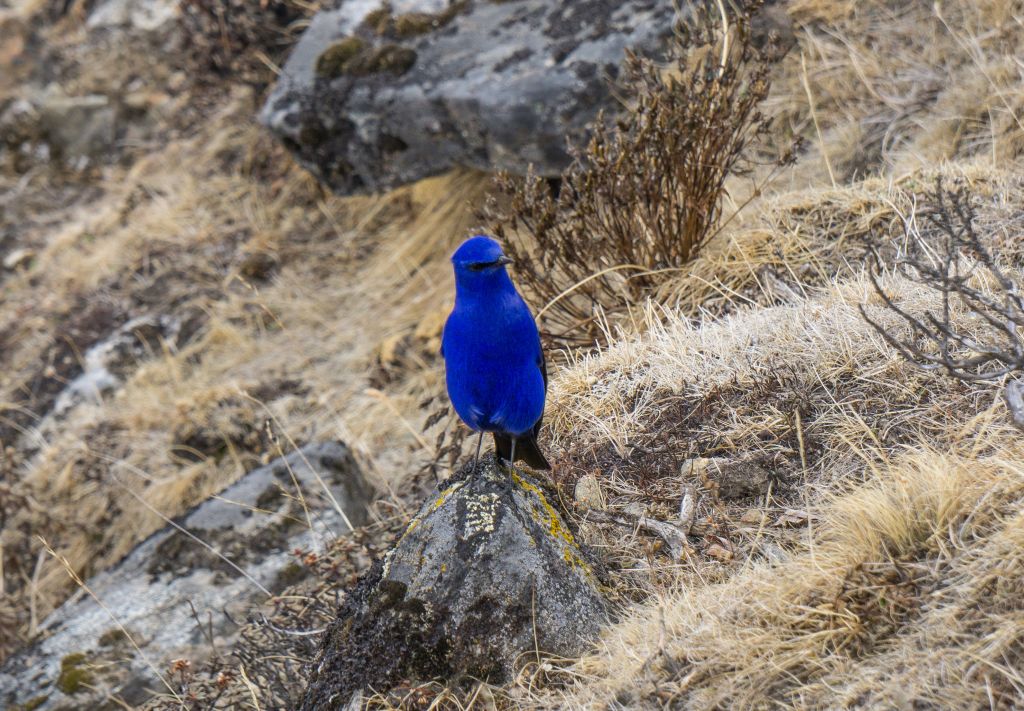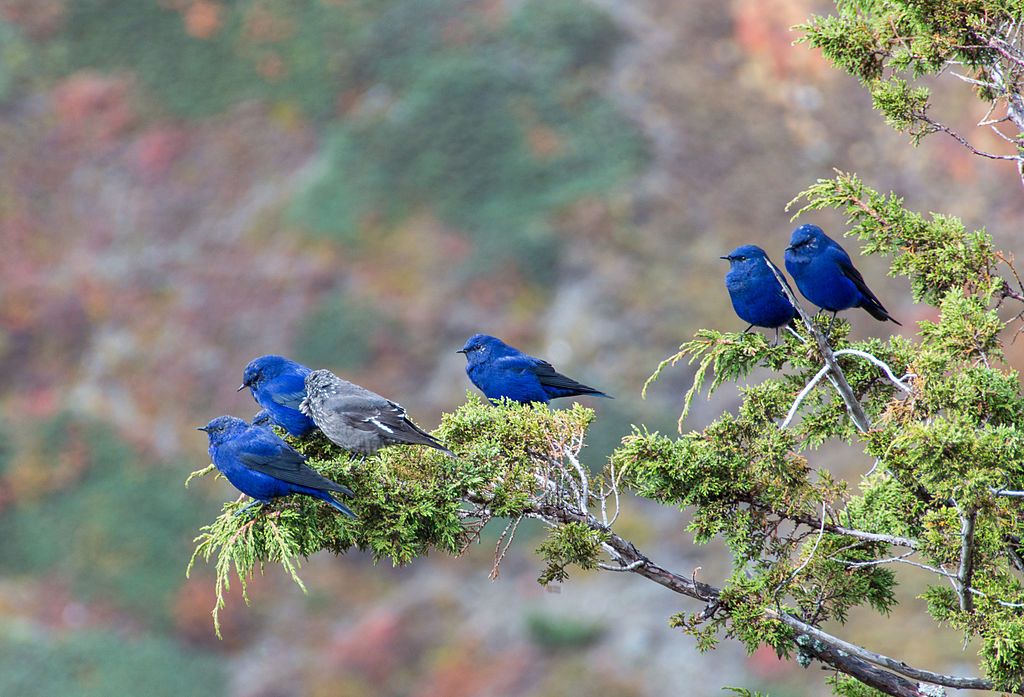
11 September 2023
While on the way to somewhere else I found … the bluest thrush.
According to Birds of the World, the grandala (Grandala coelicolor) is a gregarious thrush that makes a vertical migration in the Himalayas and Tibetan Plateau(*) from barren alpine breeding grounds at 3900–5500 m (12,800-18,000 ft) to rocky mountainside valleys and ridges at 3000–4300 m (9,800-14,000 ft), sometimes as low as 2000 m (6,500 ft).
To put this in perspective, if grandalas lived in the U.S they could only breed on Denali (20,000 ft) or the highest Rocky Mountains. Some of them never come down as low as the highest point in the Rockies, the peak of Mount Elder.

Grandalas are the same size as wood thrushes and like the wood thrush are the only species in their genus, but there the similarity ends. For instance, grandalas are sexually dimorphic with royal blue males and brownish-gray females.

Grandalas have versatile diets tuned to their cold climate lives. They eat insects in summer and fruit in fall and winter.
Like cedar waxwings grandalas travel in huge flocks in fall and winter. When they perch they flick their wings and tails.
Watch the bluest thrush in this 4:45 minute video by RoundGlass Sustain.
(*) Grandalas occur at high altitudes in these countries/territories: India, Nepal, Bhutan, Tibet, China, northern Myanmar.
(credits are in the captions)
What a stunningly beautiful and knowledgeable post, Kate! Thank you. That picture of the males and females traveling in their flock is a wonderful contrast in color. I appreciate your posts every day so very much!